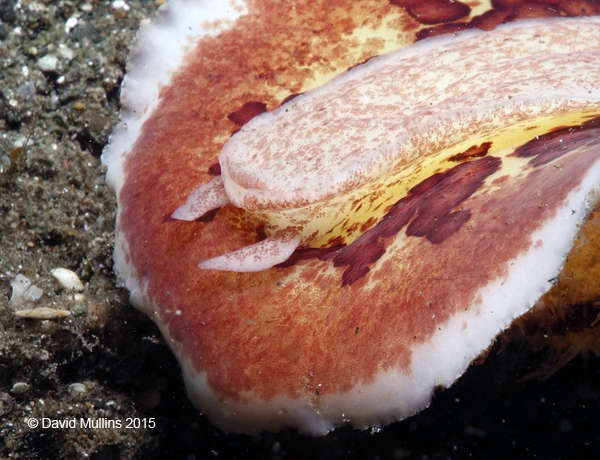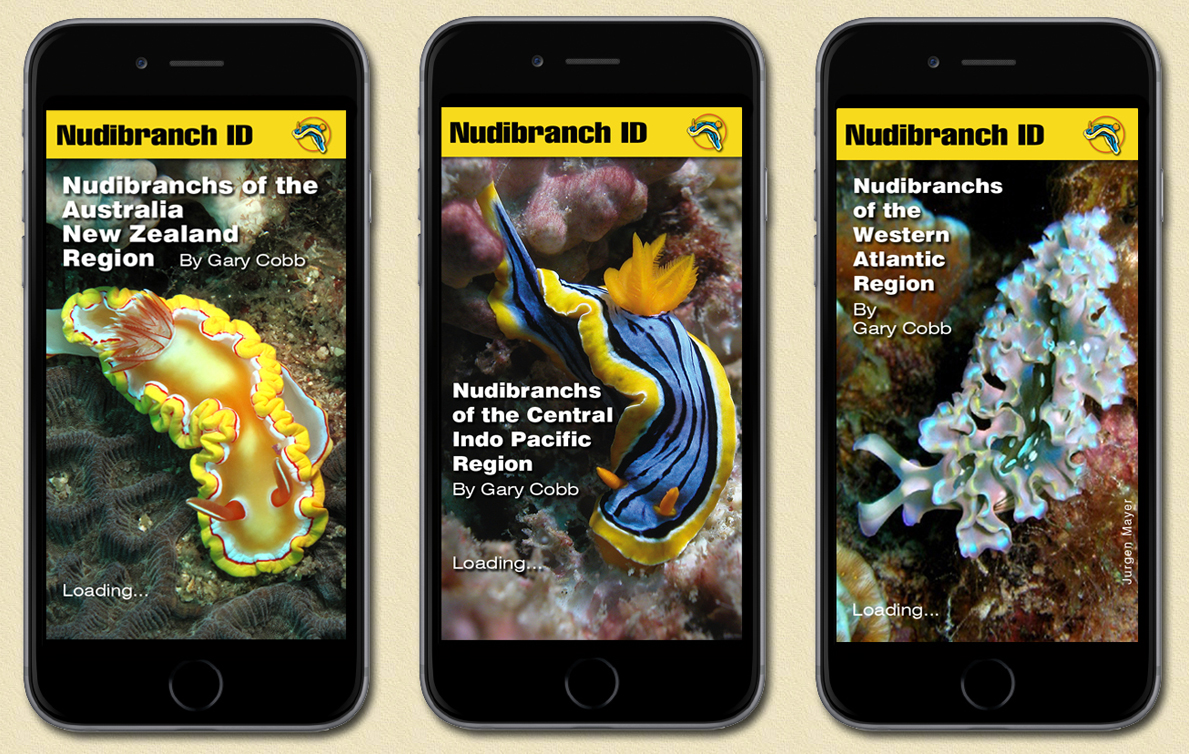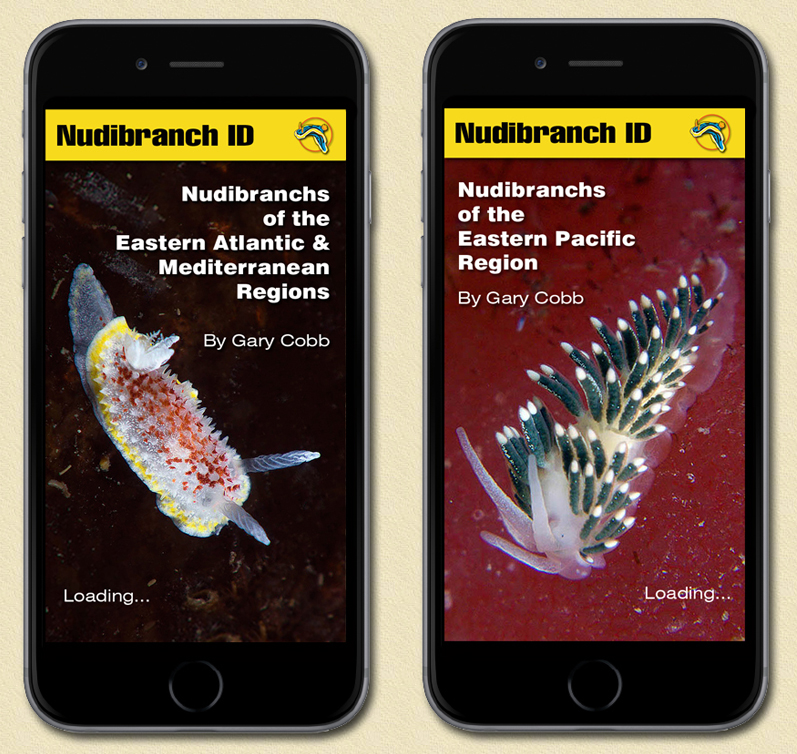 |
Otinodoris sp.
Image courtesy of Dave Mullins4 metres, in the Lawadi muck, Milne Bay, PNG
Sony DSC-RX100 in Nauticam Housing with wet macro diopter, Inon Z220 strobe.
 |
Otinodoris sp. (undescribed) Milne Bay, PNG has proved to be a rich source of new or unusual species of sea slug. The Webmaster and I were there recently and examining, very closely, the substrate at Lawadi for tiny specimens to record for posterity when this hand-sized beauty was spotted out in the open undulating across the silt and rocks. I swooped in and took some quick pics including a couple of its ventral surface before the Webmaster settled in to take some glorious video of it on the move. I will admit that my initial thoughts as I continued the dive, especially with those distinctive ventral markings in mind, was of Platydoris. However on closer examination the mantle surface can be seen to be covered in long branching papillae. These are so obvious in the Webmaster's video wafting back and forth as the slug makes its way forward. Terry Gosliner kindly came to the rescue suggesting it is a species of Otinodoris and remarking that it looks quite similar to Otinodoris raripilosa. It may be that species or an undescribed one but relying on a photograph to identify some of these Discodorididae is fraught with danger. (See page 182 of the new Nudibranch and Sea Slug Identification: Indo-Pacific book by Gosliner, Valdes & Behrens). Note the ventral colouration and patterning and also those large flattened oral tentacles. The Discodorididae features of a notched upper lip and the bilabiate anterior foot are also observable. Sometimes it's so nice to take off the macro lens and still have a sea slug fill the viewfinder. WEBMASTER'S NOTES: I'll drink to that! |
Queensland, Australia
marineimages@hotmail.com
December 2015
Send Dave email at marineimages@hotmail.com
Dave Mullins on location
 |
|
Nudibranch reference material comes in many shapes and sizes but primarily books and websites. The problem with reference books is outdated material and their weight when travelling. Taxonomy is changing and adding or altering names at a rapid rate. The problem with the Internet is range and accessibility.
Now, thanks to the development by and ongoing efforts of Gary Cobb there is a series of smart device applications called Nudibranch ID. When the series is complete you'll be able to reference all the nudibranchs of the world.
No web connection required.
The Nudibranch ID App Series:
These field guides will place right at your fingertips, anytime and anywhere, an outstanding selection of Nudibranchs found throughout the World.
Featuring:
Indo-Pacific - version 19.0 - 700 species (available now)
Eastern Pacific - version 16.0 - 423 species (available now)
Australia and New Zealand - version 18.0 - 1139 species (available now)
Eastern Atlantic/Mediterranean Sea - version 5.0 - 680 species (available now)
Western Atlantic - version 4.0 - 498 species (available now)
Indian Ocean/Red Sea - (out soon)
Western Pacific - (out soon).
Available as iPhone or Android versions.
These are true Apps not just simple identification guides. Search functions and the ability to create lists for emailing are game breakers in this field. They are updated (for free) regularly.
Visit: www.inudibranch.com for a full description.
 |
 |
